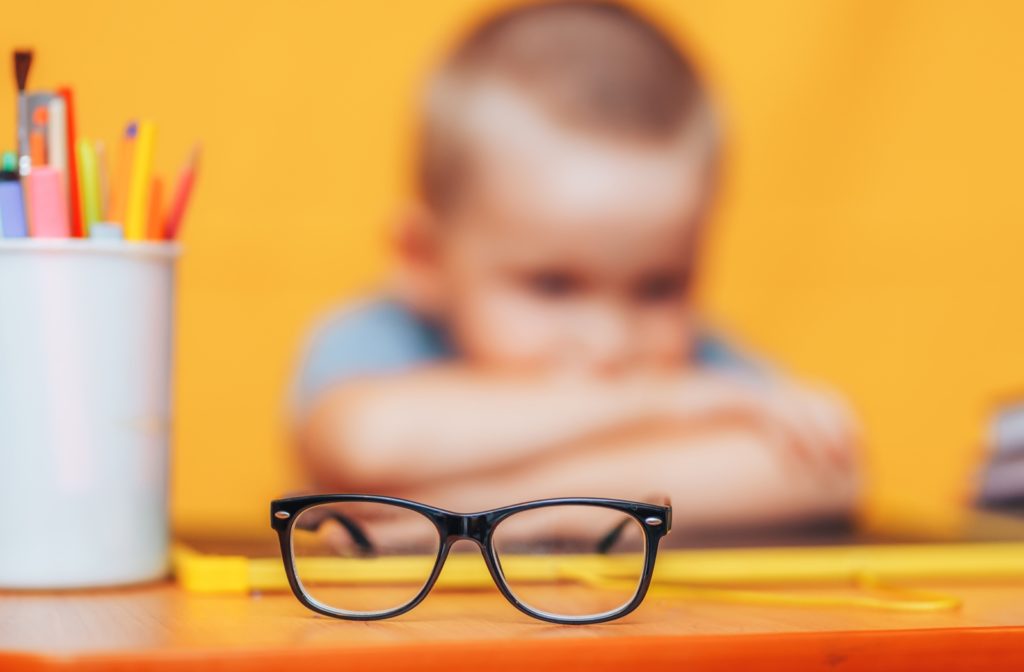Myopia, also known as nearsightedness, happens when your eyes have trouble focusing on far-away objects. Typically, light enters your eye, goes through your cornea, iris, and lens, and then lands on your retina, sending signals to your brain through the optic nerve.
With myopia, light lands in front of your retina instead of directly on it, which can lead to:
- Blurred vision
- Increased squinting
- Persistent headaches
- Difficulty seeing at night
Myopia affects nearly 30% of Canadians. The condition can first develop in school-age children and get worse over time. Myopia control methods help slow this progression. These methods range from corrective eyeglasses to eye drops to contact lenses.
Finding the right way to slow myopia progression can make a remarkable difference in your child’s life. They’re likely experiencing eye strain and having trouble seeing during school or other activities, which can affect their learning and development.
Here are 4 ways to slow the progression of myopia.
1) MiyoSmart Lenses
MiyoSmart lenses, developed by Hoya, are specifically designed for children’s myopia control. The lenses work by integrating a “treatment area” on the lens, shaped like a bullseye. This treatment area focuses a child’s vision to correct myopia while “defocusing” their peripheral vision to slow myopia progression.
MiyoSmart lenses are an excellent option for children because:
- They’re designed to withstand impact so children can play freely
- They’re able to fit in a wide variety of frames so your child can choose their favourite look
- They come with built-in UV protection to protect your child’s eyes
Prescribing MiyoSmart lenses works similarly to single-vision lenses. A comprehensive eye exam lets your optometrist get a good look at your child’s eyes to diagnose myopia and decide if MiyoSmart lenses are the best treatment option.
A two-year clinical trial showed MiyoSmart lenses slowed or ended myopia progression by an average of 60%.
2) Orthokeratology
Orthokeratology, commonly known as Ortho-k, are custom-fitted contact lenses designed to treat myopia caused by an irregularly-shaped cornea. If your child has an incorrectly shaped cornea, the light entering the eye doesn’t reach the retina correctly. When light doesn’t reach the retina properly, it can cause vision problems.
Since children’s eyes are still growing, ortho-k can be an option. These special contact lenses are worn while sleeping and reshape the cornea over time to correct the irregular shape. Your optometrist ensures the custom-fitted lenses are as comfortable and effective as possible.
When your child removes the Ortho-k lenses in the morning, they shouldn’t need to use prescription glasses or contact lenses to see clearly.
3) Atropine Eye Drops
Atropine eye drops help dilate your child’s pupils and reduce fatigue caused by focusing too hard on objects due to myopia. More technically, atropine blocks acetylcholine, a neurotransmitter that causes muscle contraction in the iris.
It’s essential you know how to help your child use the eye drops since they likely won’t be able to do it themselves:
- Start by washing and sanitizing your hands to prevent infection
- Have your child tilt their head back and pull down on the skin below their eye
- Ask your child to look up as you place the eyedropper above their eye
- Squeeze the eyedropper slowly, so one drop comes out for each eye
- Make sure your child closes their eyes slowly and doesn’t touch them
4) Multifocal Contact Lenses
Myopia can progress because of eye strain. If you notice your child squinting to make out objects at a distance, they may have myopia. This constant squinting can cause eye strain, which could lead to headaches, nausea, and worsening myopia conditions.
Your optometrist can diagnose myopia early. They can prescribe multifocal, soft contact lenses to reduce stress on their eyes. They are similar to MiyoSmart lenses; multifocal contact lenses have a bullseye shape. The centre of the bullseye helps distance vision. At the same time, the outer part focuses on the retina, which helps slow myopia progression.
Finding the Right Treatment
Your child’s ability to run, play, and discover the world around them starts with finding the proper treatment for myopia. Slowing myopia progression can increase their quality of life. The right treatment option can be the difference between overcoming myopia and not.
Your optometrist is well equipped with years of experience to help your child overcome myopia. They are a great resource whether your child needs an eye exam or vision therapy to help improve your child’s vision, including slowing myopia progression.



